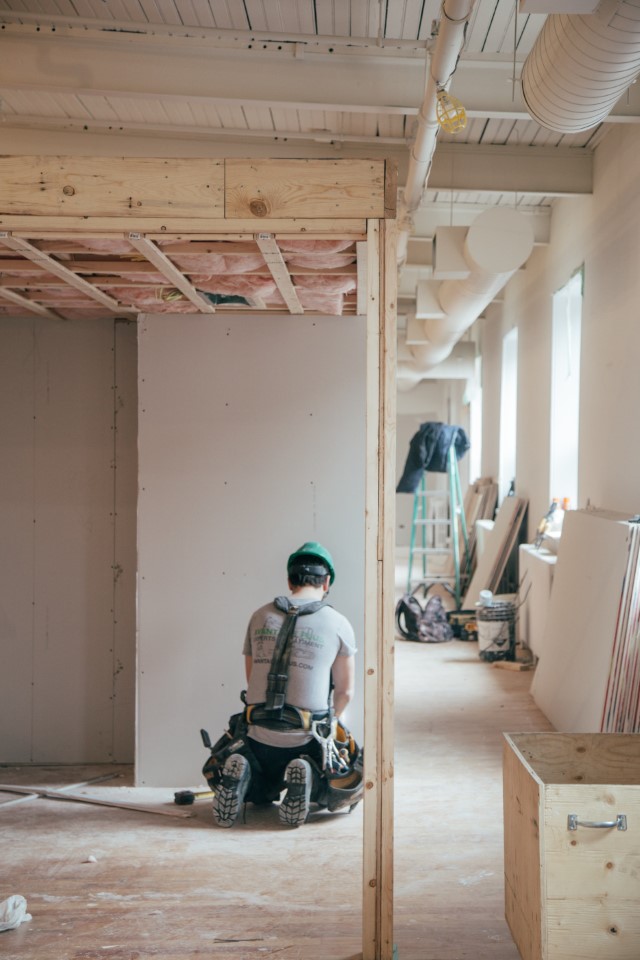Sub-Saharan Africa Infrastructure Construction Market Size and Trends Analysis by Countries, Sector and Segment Forecast to 2026
Powered by ![]()
Access in-depth insight and stay ahead of the market
Explore actionable market insights from the following data in our ‘Sub-Saharan Infrastructure Market’ report:
- Sub-Saharan infrastructure construction market outlook. The analysis as well as historical figures and forecasts of revenue opportunities from the sector (roads, railways, electricity and power, water, and sewage, others) and regional segments.
- Overview of the Sub-Saharan infrastructure construction industry outlook up to 2026.
- Analysis of the outlook for infrastructure investment in major countries: Ethiopia, Nigeria, South Africa, Tanzania, and the Rest of Sub-Saharan Africa.
- Insight into the project pipelines for sectors such as roads and railways
How is the ‘Sub-Saharan Infrastructure Market’ report different from other reports in the market?
Businesses need to have a deeper understanding of the market dynamics to gain a competitive edge in the coming decade. Get Our ‘ Sub-Saharan Infrastructure Market’ report today, which will help you to:
- Evaluate regional trends in infrastructure development right from insight into output values and into project pipelines.
- Identify the fastest growers to enable assessment and targeting of commercial opportunities in the markets best suited to strategic focus.
- Identify the drivers in the Sub-Saharan infrastructure construction market and consider growth in developed economies.
- Formulate plans on where and how to engage with the market while minimizing any negative impact on revenues.
We recommend this valuable source of information to anyone involved in:
- Contractors Including Civil Works, Electrical, HVAC, and Others
- Consultants/Designers
- Building Material Merchants/Players
- Management Consultants and Investment Banks
- Portfolio Managers/Buy-Side Firms
- Strategy and Business Development
- Investment Banking
To Get a Snapshot of the Sub-Saharan Infrastructure Market Report, Download a Free Report Sample
Sub-Saharan Africa Infrastructure Construction Market Overview
The Sub-Saharan Africa infrastructure construction market size will be valued at $91.1 billion in 2023 and is estimated to grow at a compound annual growth rate (CAGR) of 5.7% over the forecast period. The growth in the market is primarily driven by the regional transportation project pipeline focusing on roadway, railway, and waterway developments.
The regional dynamics for the infrastructure construction sector are backed by steady investments in the transportation sector. However, with rising inflation rates and public debts with a stronger US dollar is likely to restrict money flow in 2023. The increase in construction material cost coupled with the hike in energy charges is projected to directly restrain the market growth over the forecast period.
Sub-Saharan Africa Infrastructure Construction Market Outlook, 2019-26 ($ Billion)
View Sample Report for Additional Insights on the Sub-Saharan Africa Infrastructure Construction Market Forecast, Download a Free Report Sample
According to GlobalData estimates, the Sub-Saharan Africa infrastructure construction market witnessed a decline of 3.8% in 2020 owing to the emergence of the pandemic and its subsequent economic turmoil. The growth momentum picked up by 2021 showcasing a growth of 4.4% in terms of output values due to the increased public spending to jolt start the regional economy. However, with the rise in energy prices and shortage/hike in construction materials coupled with a surge in public debts derailed the momentum in 2022.
Sub-Saharan Africa Infrastructure Construction Market Segmentation by Sectors
The Sub-Saharan Africa infrastructure construction industry covers railways, roads, water and sewage, electricity and power, and others. The roads segment is projected to dominate the overall market share in 2022.
Roads: Sub-Saharan Africa roads sector requires substantial improvements. However, lack of funding constrained by the elevated public debts, rising inflation rates, currency depreciations, and increased dollar-denominated debt servicing costs, the sectoral growth momentum is likely to struggle over the short-term period.
Despite these challenges, the road network of the region is anticipated to increase with a sizable pipeline from Nigeria. For instance, as part of the National Development Plan 2021–2025, the Nigerian government aims to increase the percentage of Nigerian road networks under scheduled maintenance and repair from 45% in 2020 to 75% in 2025. The plan is expected to generate 21 million full-time jobs and lift 35 million people out of poverty by 2025.
Sub-Saharan Africa Infrastructure Construction Market Share by Sectors, 2023 (%)
Fetch Sample PDF for Sub-Saharan Africa Infrastructure Construction Segment-specific Revenues and Shares, Download a Free Report Sample
Electricity and Power: Much of Sub-Saharan Africa is heavily reliant on carbon-based fuels and the energy transition is more gradual, although investment in renewable energy is largely increasing. The pipeline is largely dominated by South Africa, the government is actively supporting the energy transition aiming to diversify its energy mix and generate 26% of the total energy mix from renewable sources by 2030.
For instance, the state-owned electricity public utility company Eskom plans to invest ZAR1.2 trillion ($71 billion) on the construction of wind farms and solar plants for a shift to cleaner energy sources by 2030. Additionally, the company plans to construct a 150MW solar power plant, with construction works commencing in Q4 2023 and ending in Q2 2026.
Railways: This segment is expected to observe the second-highest compounded annual growth rate from 2022 to 2026. The growth in this segment is supported by the new project pipeline from Nigeria, Ethiopia, and Tanzania. For instance, these three countries together account for more than 57.0% of the regional railway infrastructure construction project pipeline. Among the largest projects in the Nigerian pipeline is the $11.2 billion Lagos Metro Rail Transit System project which involves the construction of a 250km metro network. It includes the construction of stations, pedestrian walkover bridges, rail crossings, and platforms, as well as the installation of a railway track.
Water and Sewage: The water and sewage segment accounted for the smallest share within the regional dynamics. The water resources in the region are under immense pressure owing to the intense droughts and floods with cities and farms facing severe water shortages. The government of Nigeria is undertaking strong measures to complete water and sewage projects in the country. For instance, in March 2022, the Minister of Water Resources announced that the government will complete many of the inherited and abandoned water projects before the present administration’s tenure ends in 2023; this includes irrigation, dam, and sanitation projects.
Others: The others category comprises airports, ports, marine, and inland waterways. This segment is projected to account for the second-largest sectoral share post roads category. The regional efforts to develop port facilities to enable efficient trade mechanism is estimated to remain a key driver for segmental growth over the forecast period. Nigeria and Tanzania are expected to witness a strong project pipeline value of more than $27.0 billion with a regional share of more than 32.0%.
Sub-Saharan Africa Infrastructure Construction Market Analysis by Countries
Ethiopia is estimated to remain a dominant force within the regional dynamics, accounting for a share of more than 27.0% in 2022. The country underwent huge political unrest with the conflict between the Tigray People’s Liberation Front (TPLF) and the Ethiopian Government in the first half of 2022. However, this conflict is cooling down with the peace process underway. The stable political scenario in the country is anticipated to boost the investor’s confidence and thereby, positively aiding the market growth over the forecast period.
Nigeria is projected to emerge as the second most dominant region in 2022 and is projected to witness an annual average growth rate of 4.0% from 2023 to 2026. The country is increasingly focusing on attracting foreign direct investments to push infrastructural growth. According to the CBN, Nigeria received NGN92.7 billion ($223.3 million) in FDI in the first five months of 2022, representing a 3.7% Y-o-Y increase. In a recent development, in April 2022, the CBN signed a term sheet with InfraCorp and four infrastructure asset managers to develop infrastructure. The corporation is expected to raise NGN15 trillion ($36.1 billion) to support investment in critical infrastructure.
South Africa is projected to showcase the lowest compounded annual growth rate over the forecast period owing to the soaring energy prices and disruptions in the supply of key construction materials amid the Russia-Ukraine conflict. In addition, the country’s total construction output value is observing a continuous downfall since 2020 with improvement expected in 2024. These factors coupled with the high risk in the political environment of the country are likely to weigh down the overall market growth over the forecast period.
Sub-Saharan Africa Infrastructure Construction Market Share by Country, 2023 (%)
View Sample Report for Additional Sub-Saharan Africa Infrastructure Construction Market Insights, Download a Free Report Sample
Tanzania is estimated to witness a second highest compounded annual growth rate over the forecast period, supported by the increased investments in infrastructure development, such as the construction of railways, roads, and an airport, coupled with spending on improving the provision of a wider and more reliable electricity network, and transportation service improvements. According to the Tanzania National Bureau of Statistics (NBS), the construction industry’s value grew by 4.7% year on year (YoY) in the first half of 2022.
Sub-Saharan Africa Infrastructure Construction Market Research Scope
| Market Size in 2023 | $91.1 billion |
| Market Size in 2026 | $111.8 billion |
| CAGR | 5.7% from 2022 to 2026 |
| Historic Years | 2016-2021 |
| Forecast Period | 2022-2026 |
| Report Scope & Coverage | Sector Overview, Construction Output Value ($ Million), Project Pipeline by Country and Sector, Regional Outlook by Key Sectors, Top 20 Project Details by Sector |
| Key Segments | Roads, Railways, Electricity and Power, Water and Sewage, Others |
| Key Countries | Ethiopia, Nigeria, South Africa, Tanzania, and Rest of Sub-Saharan Africa |
Key Players
Table of Contents
Table
Figures
Frequently asked questions
-
What was the Sub-Saharan Africa infrastructure construction market size in 2023?
The infrastructure construction market size in Sub-Saharan Africa will be valued at $91.1 billion in 2023.
-
What is the Sub-Saharan Africa infrastructure construction market growth rate?
The infrastructure construction market in Sub-Saharan Africa is expected to grow at a CAGR of 5.7% during 2022-2026.
-
What are the key sectors in the Sub-Saharan Africa infrastructure construction market?
The key sectors in the Sub-Saharan Africa infrastructure construction market are roads, railways, electricity and power, water and sewage, others.
-
Which are the key countries in the Sub-Saharan Africa infrastructure construction market?
The key countries in the Sub-Saharan Africa infrastructure construction market are Ethiopia, Nigeria, South Africa, Tanzania, and Rest of Sub-Saharan Africa.
-
Is there a third level of segmentation in the report?
GlobalData’s focus is on providing reliable and accurate data that is supported by robust research methodology. Our reports undergo rigorous quality checks and are based on primary and secondary research sources, ensuring that the numbers and insights provided are trustworthy. However, despite the best efforts to gather comprehensive data, there could be instances where the available data is limited, making it challenging to provide third level segmentation. In such cases, GlobalData may choose to provide high-level insights and general trends rather than forcing segmentation that may not be backed by sufficient data. This approach ensures that the report’s overall quality and credibility are maintained.
Get in touch to find out about multi-purchase discounts
reportstore@globaldata.com
Tel +44 20 7947 2745
Every customer’s requirement is unique. With over 220,000 construction projects tracked, we can create a tailored dataset for you based on the types of projects you are looking for. Please get in touch with your specific requirements and we can send you a quote.













